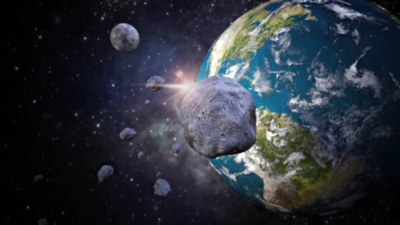Asteroid as big as an airplane to pass earth: Here’s when and if you can see it |

On July 28, 2025—an asteroid roughly 230 feet across (think the size of a large airplane) named 2025 OW will zip past Earth at nearly 47,000 miles per hour, sailing by at a comfortable distance of about 393,000 miles—that’s about 1.6 times farther than the Moon.But before you grab your flashlight and bunker gear, take some deep breaths. NASA says this is completely routine. Even though the rock is big enough to get attention, it poses absolutely no threat to Earth.NASA’s Jet Propulsion Laboratory (JPL) and the Center for Near-Earth Object Studies (CNEOS) stress that fast-moving space rocks are just part of everyday life in the solar system. “Close approaches happen all the time,” NASA’s media specialist Ian J. O’Neill told ABC News, “and if there was any threat, you’d hear about it clearly from us.”So yes, the asteroid is big—but its orbit is mapped out with precision, and scientists know exactly where it’s going to be for the next century. In short: no surprises, no panic, just routine monitoring.
Can you see it? Not this time
Curious to catch a glimpse of 2025 OW through binoculars or a telescope? Don’t bother. According to Davide Farnocchia, an asteroid expert at NASA, it won’t be visible to the naked eye or standard backyard gear. But the stage is set for a much cooler spectacle coming in 2029, when asteroid Apophis makes an even closer pass—close enough to be visible from Earth without equipment
Just how often do asteroids come close?
A lot more than you’d think. Smaller rocks and space dust—about 100 tons daily—hit Earth harmlessly as they burn up in the atmosphere. Larger asteroids, like 2025 OW, pass near Earth every few years, but Earth impacts of that size happen roughly once every 10,000 years.For real danger to become a concern, the object would have to be at least 460 feet wide and close enough to cross Earth’s orbit in a risky way. 2025 OW doesn’t tick those boxes, even though it’s bigger than 150 feet
What’s next after 2025 OW? Apophis 2029
The next head-turner in asteroid news is 99942 Apophis, due to zoom past Earth in April 2029, at just 38,000 km—which is closer than geostationary satellites. It’s about 1,100 feet wide, and early predictions of possible impact have since been ruled out for at least the next century, according to NASA.“Asteroid Apophis will safely pass close to Earth on April 13, 2029,” NASA says. Monitoring asteroids like 2025 OW is part of NASA’s planetary defense mission—basically an early-warning radar for killer space rocks. Even if most asteroids pose zero risk, the idea is to catch potential threats before they get close, so we can plan mitigation—think spacecraft diversion or evacuation strategies. When objects like YR4 or Apophis show up, scientists run simulations, refine orbits, and assess risk over years.So yes, a plane-sized asteroid is cruising by Earth on July 28th, but there’s no cause for alarm. Space is busy with close calls all the time—most of which we don’t even feel or notice. NASA’s tracking programs give us peace of mind—and a reason to stay excited about cosmic neighbors we never see.Keep an eye on the headlines for 2029’s Apophis, which might actually put on a visible-light show. And don’t sweat 2025 OW—it’s a friendly reminder of our ongoing lunar and planetary watchdog operations.




